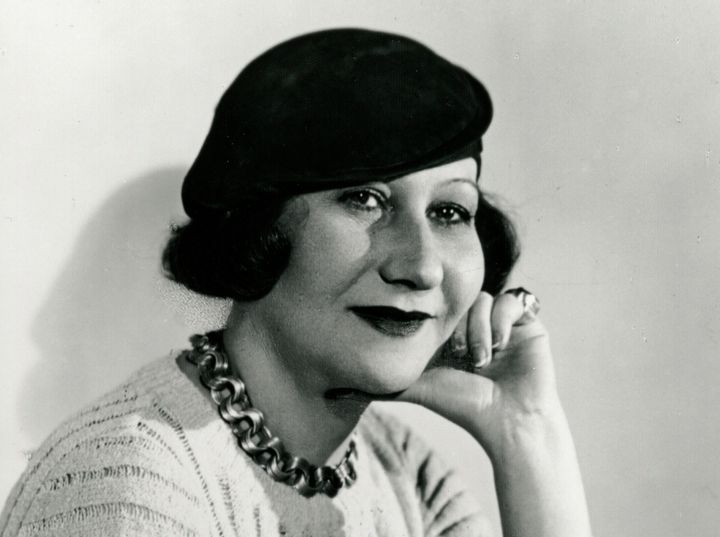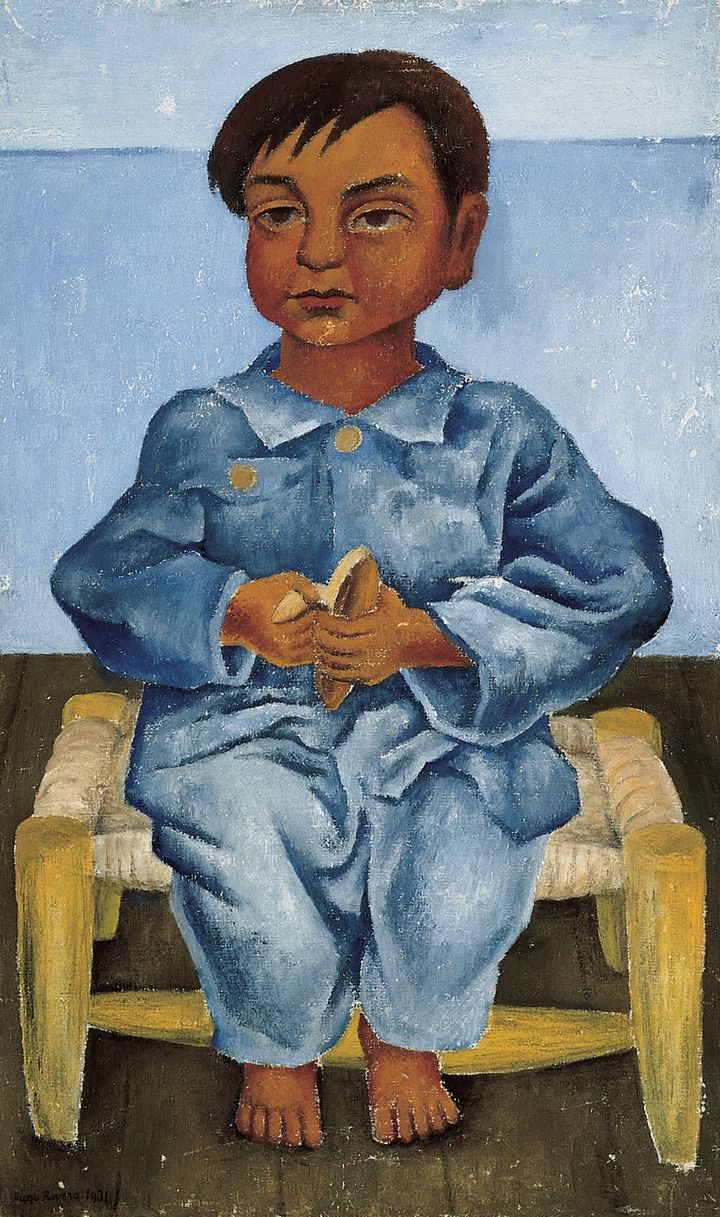NORTON SIMON MUSEUM, THE BLUE FOUR GALKA SCHEYER COLLECTION ARCHIVES
Art is not about itself but the attention we bring to it. - Marcel Duchamp
The artist Beatrice Wood once tried to patiently explain to Emmy “Galka” Scheyer (1889-1945)—a German-born emigrée whose lifetime mission was to popularize modern art in the United States—that Scheyer would be invited to more social events in Los Angeles if she just wouldn’t shout so much.“ Galka, look, dear... you dominate,” Wood advised, “And I think that’s why you’re not always invited.”
“Well, why shouldn’t I shout?” Scheyer countered: “I’m more intelligent than them! I know everything! Of course I’m going to shout! Nothing’s going to stop me! I have something to give and they should know it.”
The exhibition “Maven of Modernism: Galka Scheyer in California,” on view at the Norton Simon Museum through September 25th, 2017, more than validates Scheyer’s point: she did indeed have a great deal to give. The roughly 500 paintings, drawings, prints, photographs and sculptures left in her estate—originally deeded to UCLA—transformed the fledgling Pasadena Art Institute, which received them in 1953, into the Pasadena Art Museum. That museum, after a decade of notable exhibits and lingering financial challenges, was in turn absorbed by the Norton Simon Museum in the mid- 1970s.
“In a quirk of art history,” comments writer/curator Victoria Dailey, “one of the greatest collections of works by German, Russian and Swiss modern artists wound up in an unlikely spot: Pasadena.”
PHOTO BY RAMONA TRENT, © NORTON SIMON ART FOUNDATION
The Blue Four Galka Scheyer Collection at the Norton Simon Museum is familiar to most Southern California museum-goers, but Scheyer herself is ripe for rediscovery. Although over 100 of her letters to the “Blue Four” (Jawlensky, Klee, Feininger and Kandinsky) have been published there is no official biography of Scheyer yet available. To help bring Scheyer’s persona into the gallery, Gloria Willams Sander, the curator and organizer of “Maven” has designed the exhibition to include ephemera—including glass slides, brochures and correspondence—as well as some rarely seen works that offer telling insights into Scheyer’s life and milleu. One detail that stands out: Scheyer’s crisply-designed brochures for the “Blue Four” look like they were designed yesterday, not 90 years ago.
Victoria Dailey, who will be speaking about Scheyer on Saturday, May 13th, has studied Scheyer’s dynamism and social connections: “Yes, Galka was part of the Schindler-Neutra crowd, who were, at the time, the ’cool crowd’ of Los Angeles: architects, artists, musicians, raconteurs, bon vivants and bohemians. Galka even lived for a time at the Schindler house, and studied architecture with Schindler during 1927.”
NORTON SIMON MUSEUM, THE BLUE FOUR GALKA SCHEYER COLLECTION © ESTATE OF PETER KRASNOW
In Peter Krasnow’s 1927 watercolor, “Recalling Happy Memories,”—given to Scheyer by the artist as a gift—Scheyer lectures to a fashionable crowd in Schindler’s King’s Road living room, holding a modern painting in one hand and a baton in the other. “Her voice was so strident,” Beatrice Wood recalled, “and her manner so intense it was abrasive. Yet, she was so alive in a room, and scintillating, that no one else counted.” Lyonel Feininger, one of the “Blue Four” artists, addressed one of his many letters to her “Dear Little Tornado.”
Of course, in an era when modern art was seen by most as repellent or crazy, it took a brilliant, hard-driving speaker to convince even sophisticated people that modern art was worth their cash or attention. A Stanford professor who heard her lecture in 1926 said that “...she made her hearers understand something of the serious aims of even this ultra-modern art because she showed that it is closely related to all modernism in which we live, and that it contains elements essential to our growth.” A raconteur par excellence, in 1929 Scheyer charged members of the Oakland Art Gallery an astonishing $250 to attend her 500 slide lecture series “From Prehistoric Art to the Blue Four.”
Jake Zeitlin (1902-87), a Los Angeles bookseller, once told an interviewer that Scheyer had approached him sometime in the 1930s with a “Blue Four” painting and said, “Jake, why don’t you come up and buy one of those paintings. It will cost you $300, and you can pay $10 a month.” Zeitlin was not interested: “I thought, I was not going to be stuck with those things. So she never stuck me with one of those great paintings, and the only man who really supported her in those days was Walter Arensberg.”
Scheyer’s connection to Walter and Louise Arensberg, early and important collectors of Duchamp whose Hollywood soirées were, in the recollection of one artist’s wife, “...an inconceivable orgy of sexuality, jazz and alcohol” is just one of many social contacts that deserves further examination. So do Scheyer’s interactions with Diego Rivera and Frida Kahlo, who she cajoled into helping organize a 1931 “Blue Four” exhibition in Mexico.
NORTON SIMON MUSEUM, THE BLUE FOUR GALKA SCHEYER COLLECTION © 2017 BANCO DE MÉXICO DIEGO RIVERA FRIDA KAHLO MUSEUMS TRUST, MEXICO, D.F. / ARTISTS RIGHTS SOCIETY (ARS), NEW YORK
Although “Maven of Modernism” features the works of many well-known artists—including Alexander Archipenko, László Moholy-Nagy, Emil Nolde, and Pablo Picasso—there are some welcome surprises from relatively unknown artists. One of them is an attenuated nude by Edward Hagedorn (1902-1982), a reclusive draftsman and printmaker who Scheyer met in the late 1920s in the Bay Area. Scheyer reportedly wanted to add Hagedorn to the “Blue Four,”—which would have then become the “Blue Five”—an offer he apparently declined.
NORTON SIMON MUSEUM, THE BLUE FOUR GALKA SCHEYER COLLECTION, COPYRIGHT:© DENENBERG FINE ARTS, INC.
Adding pathos to Scheyer’s accomplishments is that fact that she never wavered from her support for modern art during some of the Twentieth Century’s darkest challenges including the Great Depression and the rise of Adolf Hitler. During lean years she taught children’s art classes—first in Berkeley and later in Los Angeles—which kept her afloat when art dealing and lecturing would not pay the bills. Scheyer, who was Jewish, must have also been deeply affected by the death of her mother in Germany: she took her own life when alerted that the Nazis were coming for her.
Although Scheyer was often assertive, loud and even impolite in social situations, those who got to know her personally saw a very different side. Asked about Scheyer’s apparent rudeness, Beatrice Wood replied: “...I got over it and realized what a beautiful person she was inside. This absolute devotion to art. This great generosity to art. She was just a wonderful person.”
Maven of Modernism: Galka Scheyer in California
April 7, 2017 - September 25, 2017
411 W. Colorado Boulevard
Pasadena, CA 91105-1825





